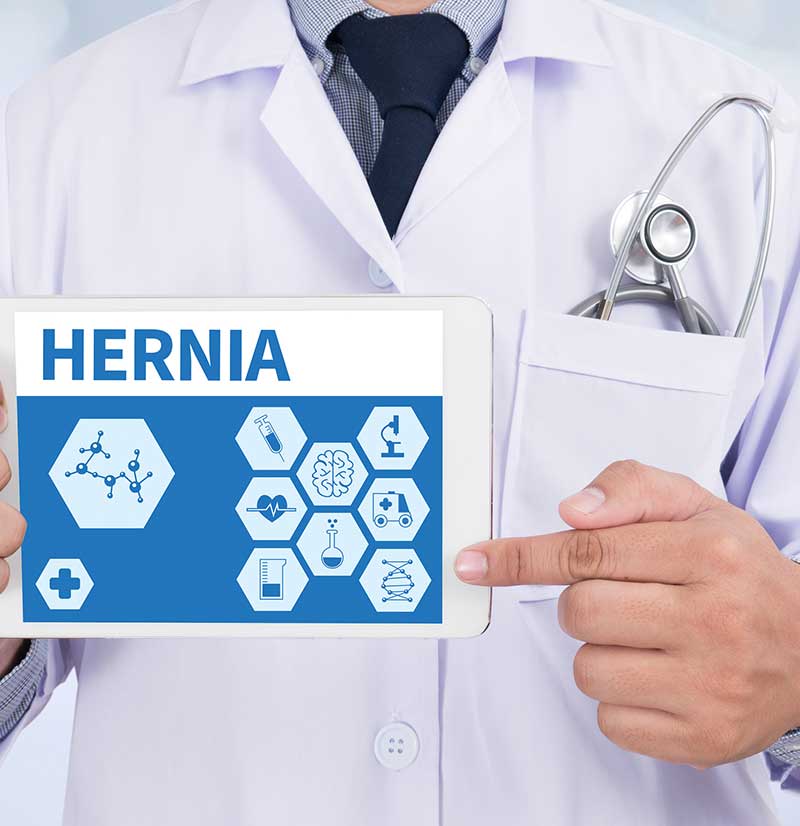

Because a hernia will not simply go away, surgery is often necessary to repair the damage.
A ventral hernia is a tear in the abdominal wall that occurs in a weak spot created by a previous surgical incision. The resulting tear can cause the lining of the abdomen to push through the weak spot and form a balloon-like sac. With some ventral hernias, part of the intestines or other abdominal contents may come through the tear.
One choice for surgically treating a ventral hernia is laparoscopic repair.
Candidates for Laparoscopic Repair of Ventral Hernia
It’s only after a thorough exam that it can be determined if a patient may benefit from laparoscopic ventral hernia repair. It may not be the best option for patients who have had extensive surgery in the abdominal area or those with underlying health conditions or bleeding disorders that may increase complication risks. Common advantages associated with this approach to ventral hernia repair include:
- Reduced risk of incision site infection
- Less post-operative pain
- Ability to return to regular activities and diet habits sooner
- Shorter recovery and healing periods
Should there be issues with performing ventral hernia repair laparoscopically as the operation is being done, the procedure may be converted to open surgery. This is typically done with patient safety in mind.


What Happens Before Laparoscopic Ventral Hernia Repair?
Preoperative preparation for this type of procedure usually includes blood work, a medical evaluation, and oftentimes image tests to clearly determine the extent of the damage from the hernia. Some patients may have an EKG and other tests to ensure that they are able to undergo the procedure. Drugs such as anti-inflammatory medications and blood thinners typically need to be temporarily stopped prior to surgery. Patients who smoke are also usually advised to quit before having this procedure to reduce surgical risks.
How it’s Performed
A laparoscopic ventral hernia repair is performed with a tiny instrument called a laparoscope which has an attached lens that transmits an image of the affected area. This device is inserted through one of the small incisions. The other incisions are used for the placement of instruments to insert the surgical mesh into the abdomen to correct the tear and remove any scar tissue that may be present. Special surgical tacks or sutures are often used to hold the surgical mesh in place. Most laparoscopic repairs for ventral hernias are done with three or four small incisions ranging in size from a quarter inch to half an inch. The procedure is usually performed under general anesthesia.
Most laparoscopic surgeries like this are performed as outpatient procedures, meaning patients usually go home the same day. There may be some mild or moderate discomfort immediately after the procedure, although this is usually managed with pain medication. Strenuous abdominal movements are best avoided until the incision sites heal. Some patients have swelling in the affected area from collected fluid in the hernia space. If this doesn’t go away on its own, it may be aspirated with a needle.
Hernias, in general, tend to be caused by severe abdominal strain. Additional risk factors include age, excess weight, and activities that cause abdominal pressure like persistent coughing or difficult bowel movements.

